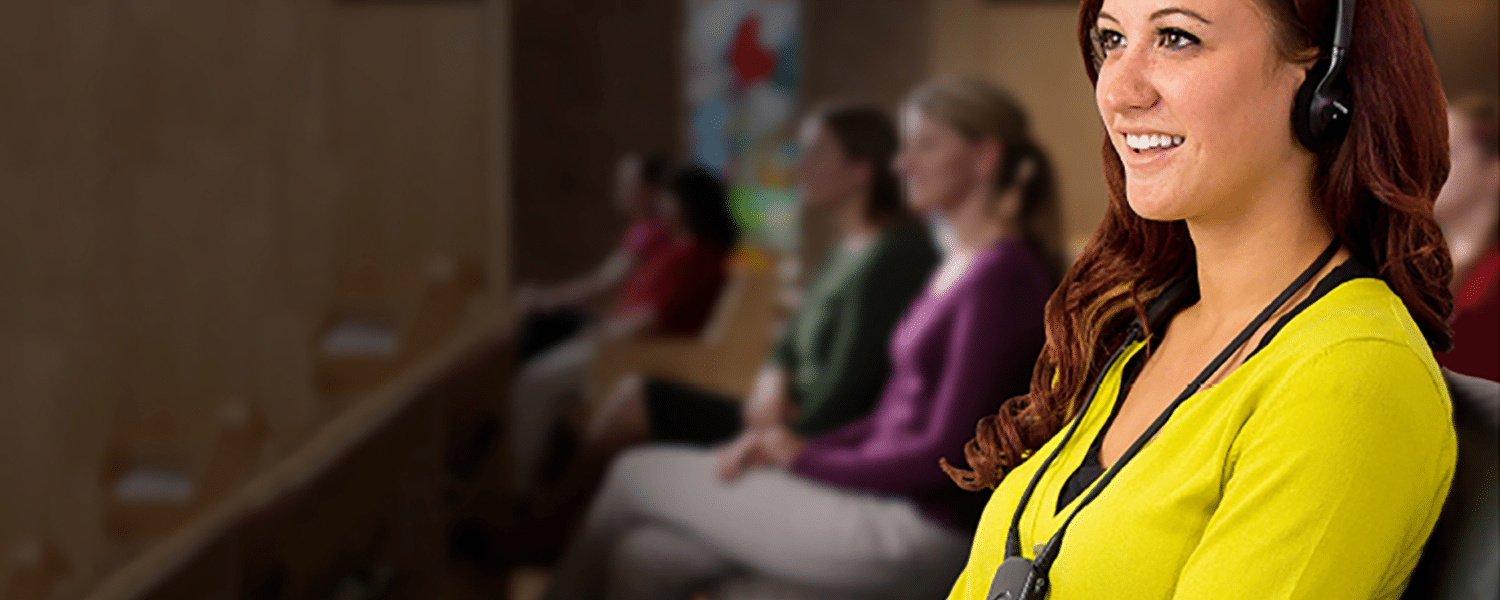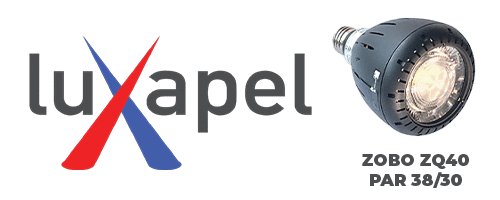By Carrie Keele
To answer this, first let me ask, what was the last truly great thing you listened to? Was it classical music? A Shakespearean play? A podcast? Perhaps it was an inspirational message or song during a worship service. Whatever it was, it had the power to move you, to inspire and connect you to a situation, a moment in time. Sound affects us and makes us feel alive. The experience of listening has a direct impact on our lives; being able to hear matters.
In houses of worship, distance, acoustics and ambient noise can all impact congregants’ ability to hear and detract from the importance of the message and the experience of listening. Additionally, according to the World Health Organization, nearly 360 million people worldwide, over 5 percent of the world’s population, has disabling hearing loss.
Often, when people develop hearing loss, they begin to withdraw from activities and public settings; they disconnect from the world and people around them because they can’t hear or experience things the way they used to. They may stop attending worship services because they are no longer able to hear the messages of strength and encouragement, and as such their minds, hearts and souls are unfulfilled. Even individuals with hearing aids or other equipment may feel left out because of the stigma associated with hearing impairment.
Assistive listening devices (ALDs) bring the sound directly to congregants’ ears or hearing aids, expanding the functionality of hearing aids and cochlear implants by amplifying sounds congregants want to hear while limiting interference from other sources of noise. ALDs aim to serve those with hearing loss; however, anyone can benefit from the clear, intelligible sound that they provide. People without diagnosed hearing impairments often experience situational hearing loss due to factors such as sickness/sinus congestion, environmental factors, lifestyle factors, etc.
While houses of worship “generally” fall outside of the ADA requirements for assistive listening, many church and worship facilities are choosing to have an ALD option available to engage their aging populations. To understand if assistive listening is right for your congregation, it is important to understand the available technologies as each has particular advantages that you may want to consider for your members.
Assistive Listening Solutions
1. Radio Frequency (RF)
RF works by transmitting the signal over an FM or radio frequency (to be specific the FCC has dedicated the 72 and 216 MHz bands for use for Assistive Listening) to a personal receiver or a telecoil-enabled hearing instrument when used with a neck loop.
- Covers a large area, can be used both indoors and out, with no direct line-of-sight issues
2. Infrared (IR)
An IR system uses infrared light to transmit the audio source to a personal receiver or a telecoil-enabled hearing instrument when used with a neck loop; infrared operates similarly to a TV remote.
- Line-of-sight technology ideal for confidential transmissions or proximity rooms as the light signal cannot travel outside of the room
3. Hearing Loop (or induction loop)
A hearing loop system uses a copper wire installed along the perimeter of a room. It is connected to a loop driver, creating an induction field that can be picked up by hearing instruments with a telecoil. Users who don’t have a hearing aid can still use a personal receiver with headphones.
- Preferred technology by users with telecoil as it delivers a personalized audio experience directly to their ear. With no extra equipment to check out, it is also the most discreet and dignified solution available.
4. Wi-Fi Technology
A new and emerging technology using Wi-Fi to deliver the audio directly to a user’s smartphone via an app. It should be noted that this technology does not meet the compliancy regulations under the ADA, but allows a venue to offer another option to its patrons.
- A great option for venues such as churches that are not required to have assistive listening, but would like to increase inclusivity and accommodate the needs of everyone.
To find the best solution to fit your congregation’s needs, reach out to local churches and learn about the solutions they use, request live demonstrations of the preferred technology solution and/or look at case studies for facilities that have successfully installed ALD.
A Closer Look: Assistive Listening in Houses of Worship
Emanu-el Synagogue
San Francisco’s Congregation Emanu-El had its temple’s membership in mind with the recent installation of an RF assistive listening system. Emanu-El has a number of elderly congregants and others with hearing loss or impairment. There were some assistive listening systems in place, but they weren’t compatible with certain hearing aids, or were just not effective for some members. Exquisite marble floors prevented wiring/looping techniques, but an RF system with neck loops provides a complete listening experience to users with or without a telecoil-enabled hearing aid.
“After the High Holy Days, [the new RF system] made a huge difference, and I even got a letter from one person who had been part of the congregation for decades, and said that this is the first time she’s been able to really hear the service!”
–Judi Leff, director of projects and programming, Emanu-el Synagogue
First Presbyterian Church
The First Presbyterian Church in Greensboro, North Carolina, recently underwent a comprehensive renovation. The church’s floorplan of approximately 65 feet by 100 feet was a challenge to providing comprehensive and consistent coverage for an assistive listening system. The installation of a hearing loop system, whose cabling traversed the sanctuary floor more than 50 times underneath a complex combination of floor coverings, and the use of a CMR3 calibrated receiver, assures that clear, intelligible audio is available for all congregants. The hearing loop also makes it possible to offer a personal and discreet listening experience to anyone with telecoil technology in their hearing aid or cochlear implants without additional equipment.
“Between improved signal strength and the control of overspill, we get a strong, consistent signal throughout the sanctuary. When the new systems were first used at a service…everyone noticed the improvement.”
–Brent Everhart, sales engineer, Audio & Light (systems integrator)
Reaching out to those who feel disconnected from a community due to hearing loss is sharing the message of inclusivity. Genuinely compassionate service involves being aware of and caring for the needs of everyone, especially those dealing with impairments. Make sure they are able to hear the beauty and emotion of the spoken word in your house of worship by providing them with the equipment they need to stay connected.
Carrie Keele is the corporate marketing manager for Listen Technologies, www.listentech.com.















